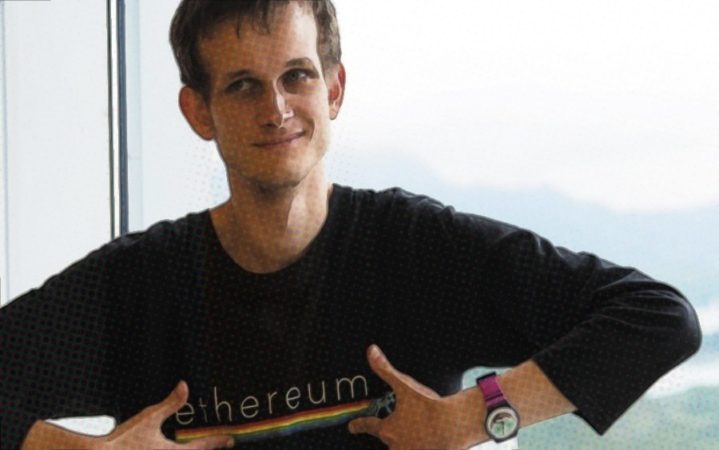- What Is a DAICO and How Does It Work?
- Benefits of the DAICO
- Challenges of the DAICO
- Case Study DAICO - The Abyss
The ICO has become the go-to method for blockchain startups to crowdfund their new ventures. However, in January 2017, Vitalik Buterin published his idea for a new model improving on the ICO – the DAICO. The acronym is a contraction of DAO and ICO, standing for “Decentralized Autonomous Initial Coin Offering”.
What Is a DAICO and How Does It Work?
The concept of the DAO has been around a while. The idea is that you can form an organization based on decentralized voting. The DAO is flat in structure, without the hierarchy that’s typical of a traditional organization.
The DAO is based on smart contracts, which govern decisions based on votes cast by its members. In a previous article, CoinCentral editor Steven Buchko discussed how such an organization could ultimately develop to run itself completely autonomously, without even needing human intervention.
When he introduced the DAICO concept, Vitalik Buterin explained how the features of the DAO can be used to improve upon the current ICO model. The DAICO starts off as a smart contract established by a team wishing to fund a particular project. The contract is initially set into “contribution” mode. Individuals wishing to invest in the project can invest ETH in exchange for the tokens of the project itself.
The terms of the investment can be set by the team. For example, they can put in place caps or KYC measures. At the end of the contribution period, no further investments can be made. Token balances are set and thereafter, the project tokens can be traded.
Investor Control over Project Funding
Once the funding period is over, the smart contract changes into “tap” mode. The tap determines the amount that the project team can withdraw from the funds within any given period of time. This is unlike the usual ICO model, where the project team has access to all funds raised from the get-go. It effectively creates a budget for the project team.

There is also a mechanism in the smart contract whereby investors can take a vote on whether to raise the tap, i.e., increase the budget based on a request from the development team. In addition, investors can vote for the smart contract to self-destruct, which will automatically refund all invested ETH tokens.
Benefits of the DAICO
By putting project funding control into the hands of investors, the DAICO concept offers a potentially lower risk investment scenario over the normal ICO model. Allowing access to a huge pool of invested funds from day one creates the risk of a scam project where the team just cut and run with the funds raised.
Even if the team are legitimate, they may make questionable spending decisions. With the DAICO model, if investors are not happy with the progress being made on the project or if they believe that the team is squandering funds, they have an opportunity to vote for a refund.
The DAICO forces teams to be transparent with investors about the progress of the project that they have put their trust and money into. Although some ICOs are now demonstrating that the market is maturing, scam ICO reports are still all too common.
By drip-feeding funding to the development team, there is also a decreased risk that the team will lose motivation to actually develop the product once the buzz and excitement of the ICO wears off.
Given that the very spirit of cryptocurrencies is focused on decentralization, the decentralized voting mechanism of the DAICO offers a kind of beautiful logic over a normal ICO. The ideas behind the DAICO raise the question: should all funds invested in a blockchain project be made available immediately to a centralized team, to spend as they like?
Challenges of the DAICO
The DAICO does appear to offer many benefits over a normal ICO. However, there are still challenges. The concept of the DAO may have been around a while but there are still only a few examples of DAOs that are now up and running. In terms of voter numbers, none seem to be particularly huge.
This is important because decentralized voting at scale still comes with challenges in ensuring that the voter community is fully engaged. Voters must also understand all the considerations around what they may be voting for. We should not underestimate the challenges of community management – over several years – in a project reliant on decentralized voting.
Case Study DAICO – The Abyss
The Abyss is the first-ever DAICO. The project itself is a blockchain-based distribution platform for video games. Bringing a video game to market currently comes with massive overheads covering marketing and promotion. The Abyss platform will offer a motivational referral system. Its users will benefit from making referrals and taking part in in-game activities.
Such a system will significantly reduce the overheads for developers bringing their game to market. It will mean that the most popular games automatically gain better visibility within the network.
However, without detracting from the merits of the project itself, the fact of The Abyss being run as the first-ever DAICO is making it into a very interesting project to watch. You can read the rules of the DAICO on the project website. They are mostly geared around creating a robust anti-fraud framework.
For example, only token holders outside of the project development team are eligible to vote on the project funding. Project team members who hold tokens are ineligible to vote. There are protocols to prevent abuse by large token holders such as exchanges. The weight of each members vote is limited by a cap of tokens. Such measures aim to provide protection from a 51% attack.
The Abyss token sale closed at the end of May. It raised more than $15m, and the team is now looking to launch the first version of the platform early in 2019.
If this proof of concept comes off, it will be interesting to see how the DAICO develops. Perhaps in future, we will see the model adopted as a more common crowdfunding mechanism for blockchain startups.
[thrive_leads id=’5219′]
Never Miss Another Opportunity! Get hand selected news & info from our Crypto Experts so you can make educated, informed decisions that directly affect your crypto profits. Subscribe to CoinCentral free newsletter now.










